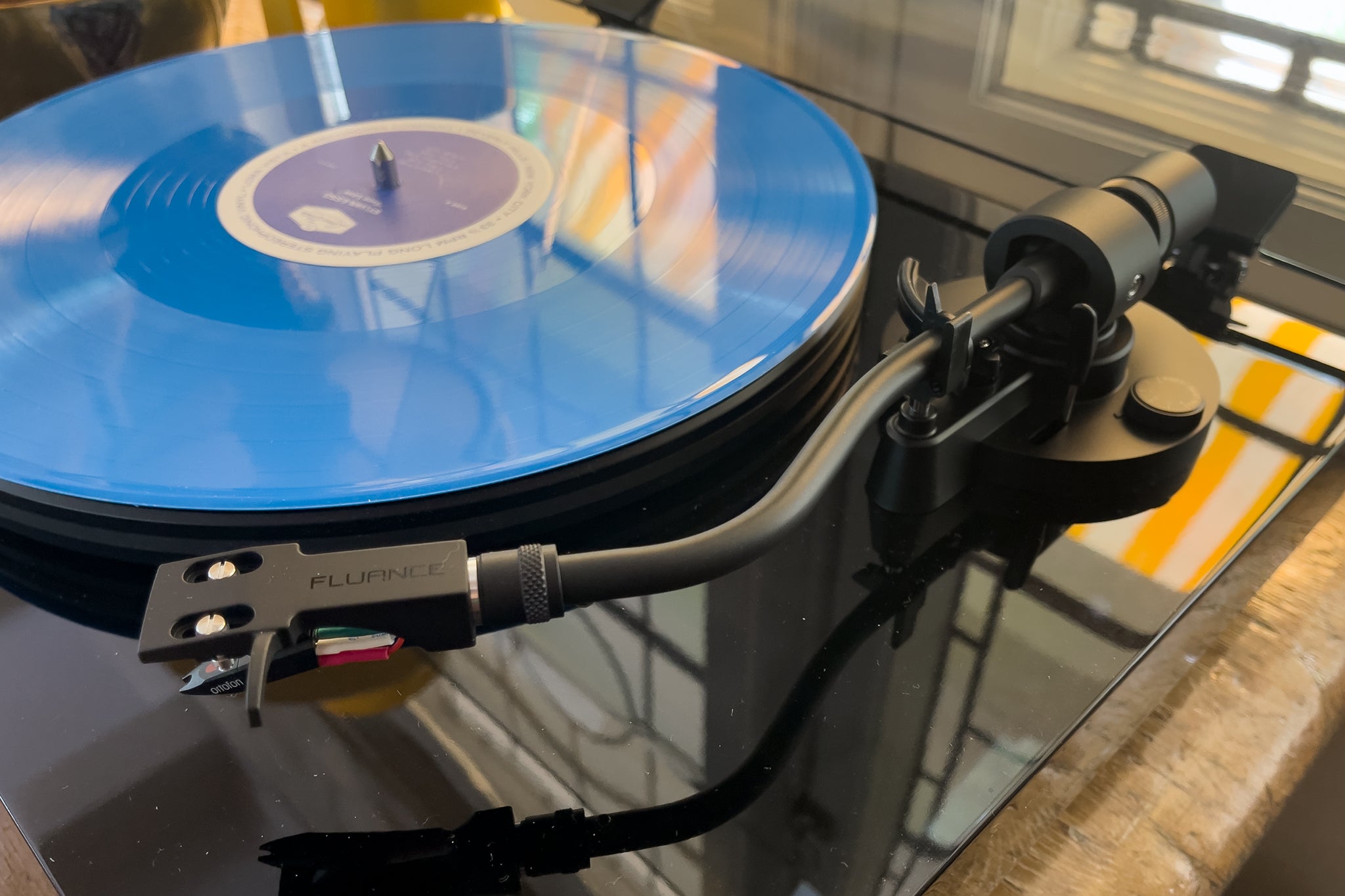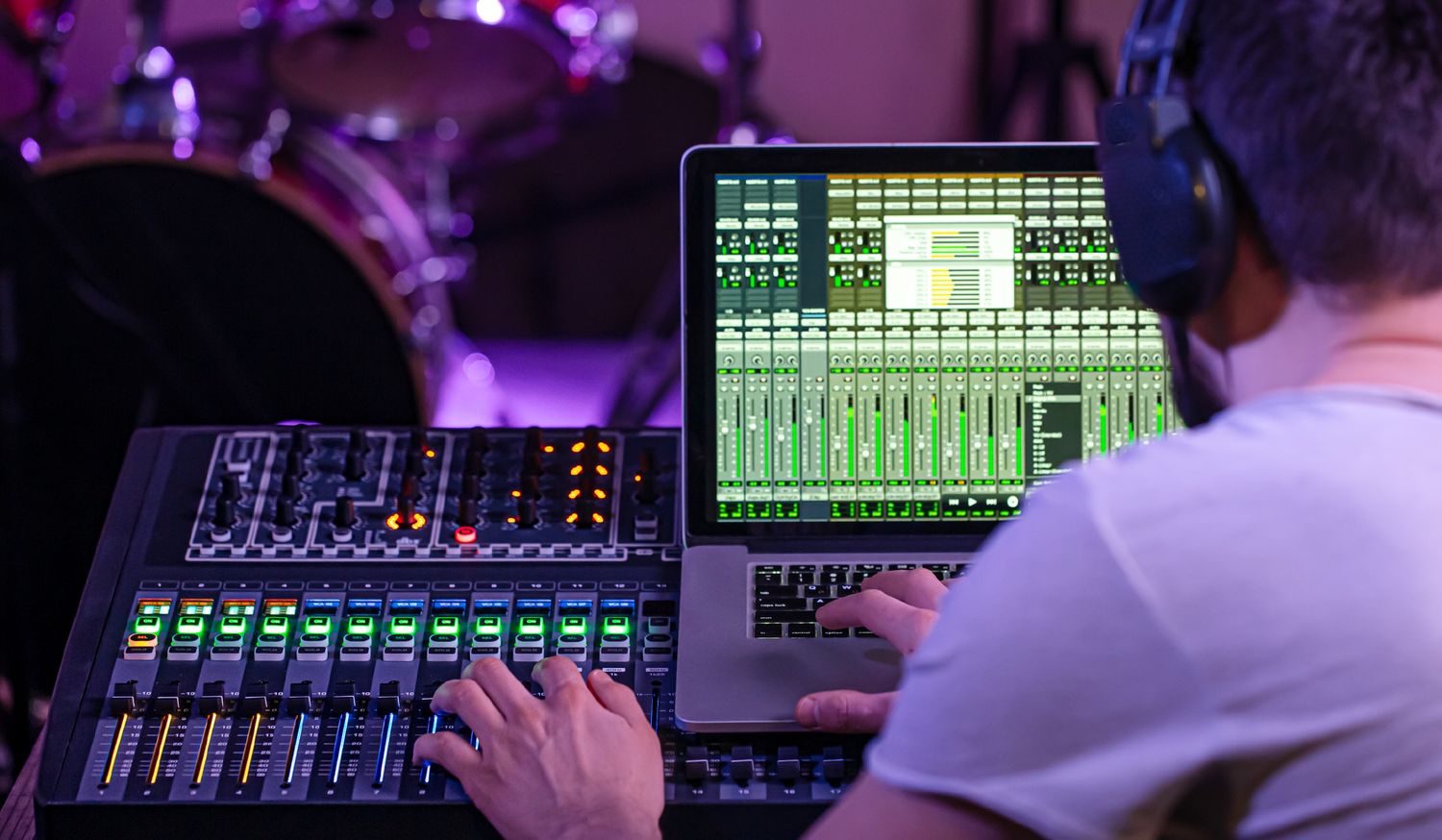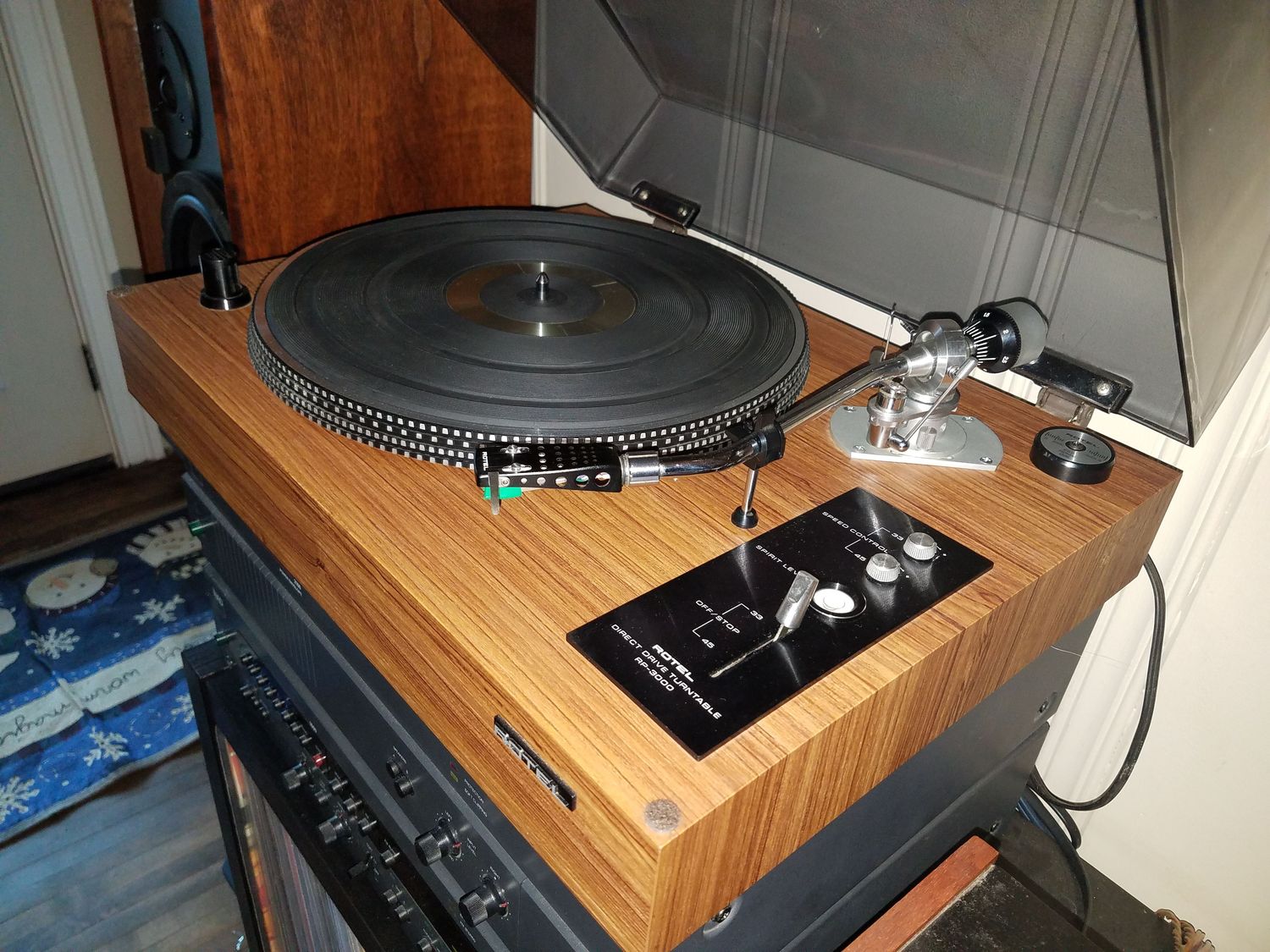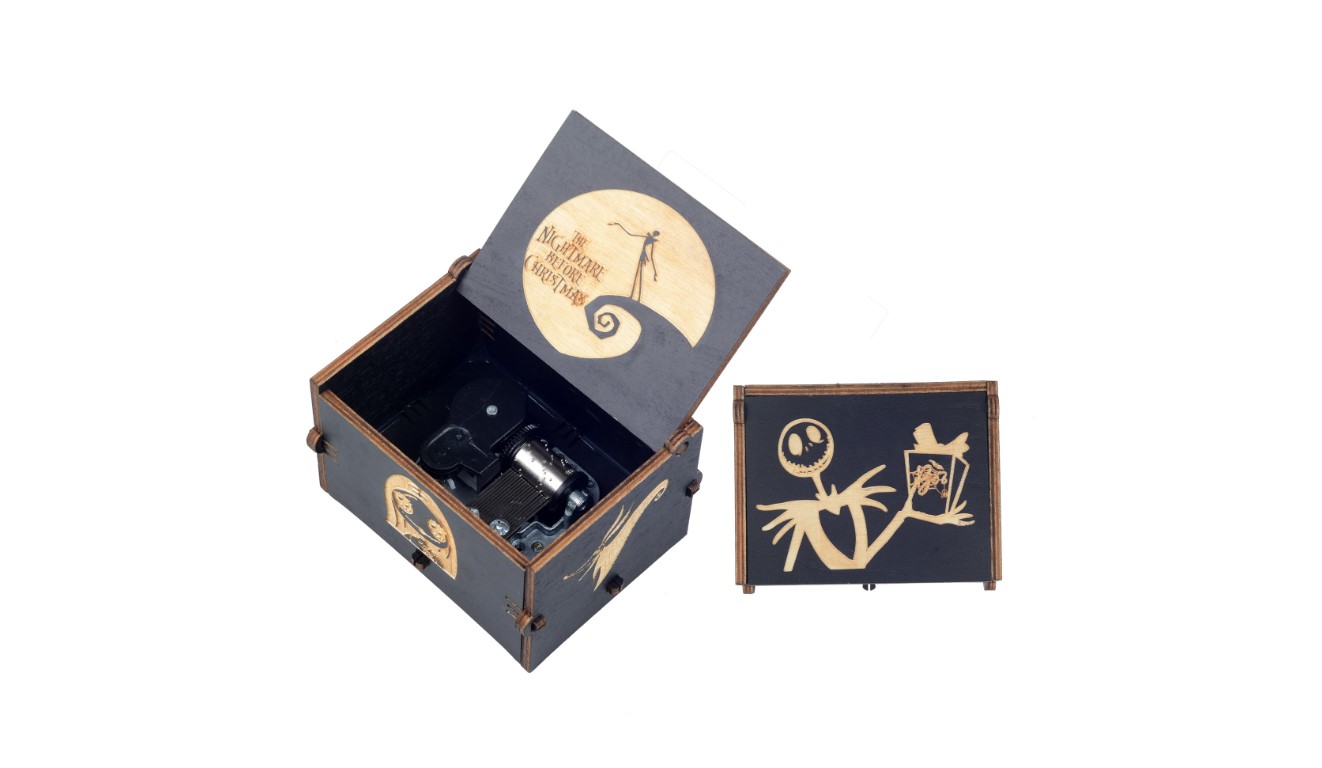Home>Devices & Equipment>Turntable>What Do You Turntable Counter Weights Do


Turntable
What Do You Turntable Counter Weights Do
Published: January 17, 2024
Discover the importance of turntable counter weights and how they enhance your music listening experience. Explore the benefits and functionality of turntable counter weights
(Many of the links in this article redirect to a specific reviewed product. Your purchase of these products through affiliate links helps to generate commission for AudioLover.com, at no extra cost. Learn more)
Table of Contents
Introduction
Welcome to the world of turntables, where the love for vinyl records comes to life. Whether you are a seasoned audiophile or just starting to explore the world of high-fidelity music, understanding the inner workings of a turntable is vital for an optimal listening experience. One essential component of a turntable is the counterweight.
A turntable counterweight is a crucial part of the tonearm assembly, responsible for achieving the proper tracking force required to deliver accurate and distortion-free sound reproduction. It ensures that the stylus maintains proper contact with the record groove, allowing for precise tracking and minimizing wear on both the record and the stylus.
In this article, we will delve into the world of turntable counterweights, exploring what they are, how they work, and why they are essential. We will also provide you with step-by-step instructions on how to properly balance a turntable, as well as some tips and tricks to optimize your listening experience. So, let’s dive in and unveil the secrets behind this small yet crucial component.
What is a turntable counterweight?
A turntable counterweight is a weight that is attached to the end of the tonearm of a turntable. It is designed to balance the tonearm and provide the correct tracking force for optimal playback of vinyl records. The counterweight plays a crucial role in maintaining the delicate balance between the stylus and the record surface, ensuring accurate tracking and minimizing unwanted distortion.
The counterweight consists of a mass that can be adjusted to apply the desired amount of tracking force. This force is measured in grams and is typically specified by the cartridge manufacturer. The tracking force is critical because it affects the way the stylus interacts with the record groove. Too little tracking force can result in poor sound quality, skipping, and mistracking, while too much force can lead to excessive record wear and damage.
Most turntables come with a calibrated dial or scale that indicates the tracking force setting. The counterweight is typically located at the rear end of the tonearm, and its position can be adjusted to achieve the desired tracking force. Some turntables feature a removable counterweight, while others have a fixed counterweight that requires additional accessories for adjustment.
It’s important to note that not all turntables have the same type of counterweight. Some higher-end turntables may feature more advanced counterweight systems, such as adjustable anti-skate mechanisms or dynamic balancing. These additional features help further optimize the tracking performance and improve the overall sound reproduction.
Overall, the turntable counterweight is a critical component that significantly affects the performance and longevity of your vinyl records. Understanding how to properly use and adjust the counterweight is essential for achieving the best possible sound quality and preserving the life of your beloved vinyl collection.
How does a turntable counterweight work?
A turntable counterweight works by counterbalancing the weight of the tonearm and applying the correct amount of force on the stylus. This force, known as tracking force, is crucial for accurate tracking of the record groove and optimal sound reproduction.
The counterweight is designed to be adjustable, allowing users to set the desired tracking force according to the manufacturer’s recommendations. It typically consists of a threaded shaft with a calibrated dial or scale that indicates the tracking force setting in grams.
To adjust the tracking force, the user rotates the counterweight dial to align it with the desired tracking force value. As the dial is turned, the counterweight moves along the threaded shaft, either closer to or farther from the tonearm pivot point. This movement changes the effective length of the tonearm and, consequently, the tracking force applied by the stylus.
The counterweight’s adjustment affects the balance of the tonearm. When properly adjusted, the counterweight compensates for the weight of the tonearm and cartridge assembly, ensuring that the stylus lightly but firmly tracks the record groove. This delicate balance is achieved by setting the tracking force to precisely match the recommended value specified by the cartridge manufacturer.
When the tonearm is correctly balanced, the stylus can glide smoothly along the record groove, minimizing any distortion or unnecessary record wear. The counterweight’s role is to provide the right amount of downward force so that the stylus accurately reads the record’s microscopic undulations and reproduces the recorded music faithfully.
Furthermore, some turntables may also feature an anti-skate mechanism, which is a secondary adjustment that counteracts the lateral force exerted on the stylus. The anti-skate mechanism helps to prevent the stylus from being pushed too strongly towards the center or outer edge of the record, providing more accurate tracking and reducing distortion.
In summary, the turntable counterweight is responsible for balancing the tonearm and applying the correct tracking force on the stylus. It allows for optimal tracking performance, ensuring that the stylus faithfully follows the record groove and delivers accurate sound reproduction.
Importance of balancing
The proper balancing of a turntable is of utmost importance for several reasons. Balancing the tonearm and correctly adjusting the tracking force using the counterweight ensures optimal sound reproduction and protects both the vinyl records and the stylus.
One of the main reasons to balance the turntable is to achieve accurate tracking. When the tonearm is properly balanced, the stylus can maintain consistent contact with the record groove at the correct angle. This allows for faithful reproduction of the recorded music, capturing the nuances and details of the audio without distortion.
Imbalanced tracking force can lead to various issues. Too little force may cause the stylus to skip or skate across the record, resulting in a disrupted listening experience. On the other hand, excessive force can cause the stylus to dig too deep into the groove, putting excessive pressure on the record surface and causing early wear and damage.
Proper balancing not only ensures accurate tracking but also helps prolong the life of your vinyl records. When the tracking force is set correctly, the stylus glides smoothly along the groove, exerting minimal wear on the delicate record surface. This protects the record from unnecessary damage and ensures that you can enjoy your vinyl collection for years to come.
Additionally, balanced tracking force plays a significant role in preserving the life of the stylus. When the tracking force is too high, the stylus can wear out quickly due to increased friction and pressure on the record surface. Conversely, insufficient tracking force can cause the stylus to mistrack or improperly read the audio information, potentially damaging the delicate diamond tip of the stylus over time.
Overall, balancing your turntable is essential for achieving optimal sound quality, protecting your vinyl records, and prolonging the lifespan of both the stylus and the records themselves. The counterweight on the turntable allows you to fine-tune the tracking force, ensuring accurate tracking and minimizing unnecessary wear and distortion.
Adjusting the turntable counterweight
Adjusting the turntable counterweight is a crucial step in achieving optimal sound quality and accurate tracking. Here are the steps to properly adjust the counterweight:
- Start by setting your turntable on a stable surface and ensure that it is leveled. A level surface is important for accurate tracking and preventing any unwanted movement.
- Refer to the cartridge manufacturer’s specifications to determine the recommended tracking force for your particular cartridge. This information is typically provided in grams.
- If your turntable has a removable counterweight, install it onto the back end of the tonearm. Make sure it is securely attached.
- Locate the calibrated dial or scale on the counterweight. The scale indicates the tracking force setting in grams.
- Rotate the counterweight dial to zero or the starting position indicated by the manufacturer, ensuring that the counterweight is positioned at the rear end of the tonearm.
- Hold the tonearm gently to prevent it from swinging freely. Some turntables may have a tonearm-locking mechanism to keep it in place during adjustment.
- Turn the counterweight dial in the direction specified by the manufacturer to increase the tracking force. Gradually increase the force, making small adjustments at a time.
- While adjusting the tracking force, observe the movement of the tonearm. The goal is to achieve a floating or level position of the tonearm when it is in the playing position. The tonearm should neither be tilted upward nor exert excessive downward pressure on the record.
- Continue adjusting the counterweight until the recommended tracking force for your cartridge is reached. This may require a bit of trial and error to find the ideal setting.
- Once the desired tracking force is achieved, lock the counterweight dial or firmly tighten the counterweight if it does not have a locking mechanism.
- Finally, perform a test playback to ensure that the turntable is tracking the record properly and producing accurate sound reproduction.
Each turntable model may have slight variations in the adjustment process, so it’s always recommended to consult the user manual or manufacturer’s instructions specific to your turntable.
By following these steps and properly adjusting the turntable counterweight, you can ensure accurate tracking, minimize record wear, and enjoy optimal sound quality from your vinyl records.
Steps to properly balance a turntable
Properly balancing a turntable is essential to ensure accurate tracking and optimal sound quality. Follow these steps to achieve the proper balance:
- Start by setting your turntable on a stable surface and ensure that it is leveled. Use a spirit level or a smartphone app with a level feature to check the horizontal alignment.
- Before adjusting the counterweight, make sure the tonearm is in the resting position and that the turntable is switched off.
- If your turntable has a tonearm lock, engage it to prevent the tonearm from moving during the balancing process.
- Adjust the anti-skate control, if available, to zero or the default setting recommended by the manufacturer.
- Remove the stylus guard or protective cover from the cartridge to expose the stylus.
- Unlock or loosen the counterweight if it has a locking mechanism. Adjust its position along the tonearm until it is near the pivot point.
- Rotate the counterweight dial to zero or the starting position indicated by the manufacturer, which is typically indicated by a line on the scale.
- Slightly lift the tonearm and gently move it to a position where it hovers just above the platter, parallel to the record surface.
- Release the tonearm, allowing it to freely swing in the vertical plane.
- Observe the movement of the tonearm. If it swings towards the platter, there is too much tracking force. If it lifts away from the platter, there is too little tracking force.
- Gradually increase or decrease the tracking force by rotating the counterweight dial in the appropriate direction. Make small adjustments until the tonearm stays level or hovers slightly above the record surface without any excessive movement.
- Stop adjusting when the tonearm achieves a balanced position and does not pull towards the platter or lift away from it. This indicates that the tracking force is properly set.
- After achieving proper balance, lock or tighten the counterweight to prevent any unintended movement that might alter the tracking force setting.
- Engage the anti-skate control at a recommended setting, corresponding to the tracking force.
- Perform a test playback with a record to ensure that the tonearm tracks the grooves accurately and produces high-quality sound.
Remember that each turntable model may have slight variations in the balancing process, so it’s always advisable to consult the user manual or manufacturer’s instructions specific to your turntable.
By properly balancing your turntable, you can optimize its performance, extend the life of your records, and enjoy outstanding sound quality from your vinyl collection.
Tips and tricks for using a turntable counterweight
Using a turntable counterweight correctly is crucial for optimal sound quality and preserving your vinyl records. Here are some tips and tricks to help you make the most out of your turntable counterweight:
- Familiarize yourself with the tracking force recommendations provided by the cartridge manufacturer. This information is usually specified in grams and ensures the proper balance between accurate tracking and record preservation.
- When adjusting the counterweight, make gradual changes and take time to observe the effects. Small adjustments can make a significant difference in tracking performance. Avoid making large changes all at once, as it may affect the delicate balance of the tonearm.
- Invest in a digital tracking force gauge. This handy tool allows for precise and accurate measurement of the tracking force, ensuring that it matches the recommended value specified by the cartridge manufacturer.
- Keep track of the tracking force setting for each cartridge you use. Different cartridges may have different recommended tracking forces. By noting down the settings, you can easily switch between cartridges while maintaining proper tracking force.
- Periodically check the calibration of the counterweight dial or scale. Over time, the markings may wear off or become less accurate. Use a stylus force gauge or consult the user manual to verify the accuracy of the tracking force setting.
- Consider using a stylus force gauge to fine-tune the tracking force. While the counterweight provides a general range of adjustment, a stylus force gauge allows for precise measurement and adjustment of the tracking force, ensuring the highest level of accuracy.
- Regularly clean the stylus to remove any buildup of dust or debris. A dirty stylus can negatively impact sound quality and tracking performance. Use a stylus brush or a dedicated stylus cleaning solution to gently clean the stylus tip.
- Do not apply excessive force when adjusting the counterweight or handling the tonearm. Handles the components with care to avoid any damage or misalignment that may affect the tracking force or overall performance of the turntable.
- Ensure that your turntable is placed on a stable surface. Vibrations or movement can disrupt the delicate balance of the tonearm and compromise the tracking performance. Use isolation feet or a dedicated turntable mat to minimize vibrations.
- Take your time when adjusting the counterweight and balancing the tonearm. It may require some trial and error to find the optimal tracking force for your setup. Patience and careful observation will lead to the best results.
By following these tips and tricks, you can maximize the performance of your turntable counterweight, achieve accurate tracking, and enjoy the best possible sound quality from your cherished vinyl records.
Common problems and troubleshooting
While using a turntable counterweight, you may encounter certain problems or issues. Here are some common problems and troubleshooting tips:
1. Tracking force inconsistency: If you notice that the tracking force varies or changes unexpectedly, check the counterweight for any looseness or damage. Ensure that it is securely attached and properly calibrated. If the problem persists, consult the turntable manufacturer or a professional technician for further inspection and adjustment.
2. Skating issues: Skating occurs when the inward force exerted by the tonearm during playback is too strong. This can cause the stylus to mistrack or skip on the record. Adjust the anti-skate control to the recommended setting corresponding to your tracking force. If the problem persists, consult the turntable manufacturer or seek professional assistance.
3. Uneven or distorted sound: If you notice that the sound is uneven or distorted, it could be due to improper tracking force. Ensure that the tracking force is set to the recommended value specified by the cartridge manufacturer. Additionally, check the condition of the stylus for any signs of wear or damage. Replace the stylus if necessary.
4. Excessive surface noise: If you experience excessive surface noise during playback, it may indicate an issue with the cartridge alignment or stylus condition. Check the alignment of the cartridge using a alignment protractor. Clean the stylus and ensure that it is in good condition. If the problem persists, consult the turntable manufacturer or seek professional assistance.
5. Skipping or mistracking: Skipping or mistracking can occur if the tracking force is either too high or too low. Adjust the counterweight to achieve the recommended tracking force specified by the cartridge manufacturer. If the problem persists, ensure that the turntable is placed on a stable surface and that the records are clean. Consider using a stylus force gauge for precise tracking force adjustment.
6. Counterweight or tonearm damage: If you notice any damage to the counterweight or the tonearm, such as bent or loose parts, stop using the turntable immediately and consult a professional technician for inspection and repair. Operating a damaged turntable can lead to further damage or compromised sound quality.
Remember, if you encounter any persistent problems or issues with your turntable or counterweight, it’s always best to consult the turntable manufacturer’s documentation or seek assistance from a qualified technician. They can provide expert guidance and ensure that your turntable is in optimal working condition.
By troubleshooting these common problems and seeking appropriate solutions, you can overcome any obstacles and continue enjoying your vinyl records with excellent sound quality.
Conclusion
The turntable counterweight is a vital component in achieving optimal sound quality and accurate tracking when listening to vinyl records. Its role in balancing the tonearm and applying the appropriate tracking force cannot be understated. By understanding how to use and adjust the counterweight, you can enhance your audio experience and preserve the longevity of your beloved vinyl collection.
Throughout this article, we have discussed the significance of the turntable counterweight and its impact on sound reproduction. We explored the purpose of the counterweight and how it works in conjunction with the tonearm to achieve proper tracking force. We also covered the steps to properly balance a turntable and adjust the counterweight for optimal performance.
Additionally, we shared helpful tips and troubleshooting advice to address common issues that may arise while using a turntable counterweight. From tracking force inconsistency to problems with skating or surface noise, these tips can assist in resolving these challenges and improving overall playback quality.
Remember, each turntable model may have specific features and instructions, so it’s essential to consult the user manual or manufacturer’s guidelines for your particular turntable. Pay attention to the recommendations provided by the cartridge manufacturer to ensure the correct tracking force setting.
By following the recommended procedures, taking care in handling your turntable components, and seeking professional assistance when needed, you can maximize the performance of your turntable and fully enjoy the rich and immersive experience of vinyl playback.
So, immerse yourself in the world of turntables, explore different cartridges, fine-tune your tracking force with precision, and let the music come alive. The turntable counterweight is your key to unlock the purest and most authentic sound from your treasured vinyl records. Happy listening!











